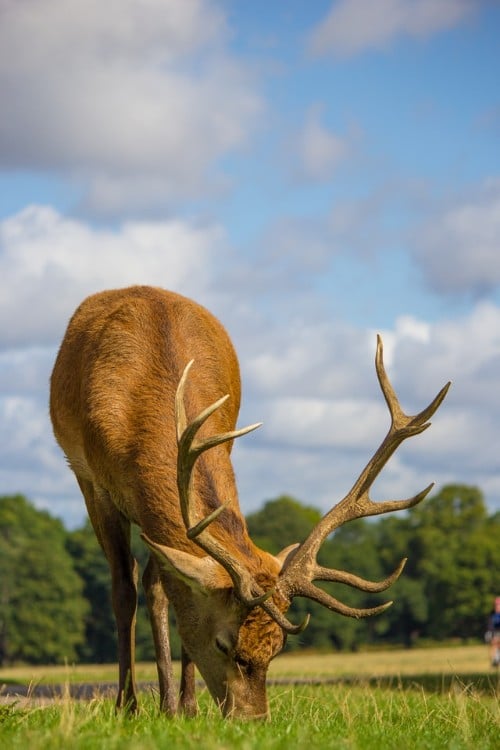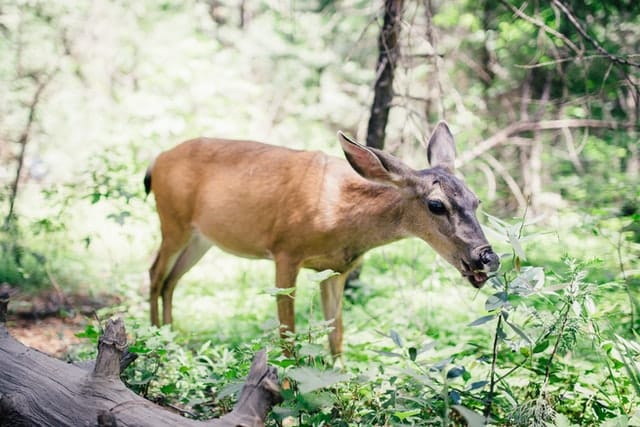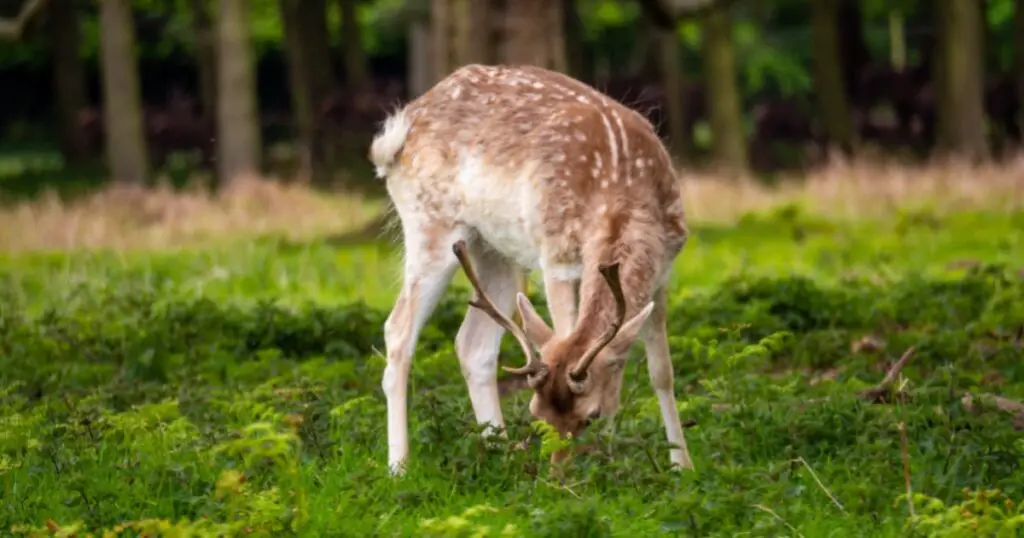The deer digestive system is unique and designed to digest food in stages, allowing ungulates to extract maximum nutrition from the forage they consume. In this article we’ll discuss what deer eat, how they eat, how deer digest food, and more.
How Deer Eat Food
Table of Contents
ToggleAn ungulate’s head can be viewed as an advanced grass processing factory. Deer have evolved to have heads designed to deal with the toughest of foods, preparing any forage for digestion.
Ungulates are herbivores, mainly eating grass and woody vegetation. This diet posses a problem because plant cells have tough, thick walls composed of cell wall material known as cellulose, hemicellulose and lignin.
These are difficult components to break down and digest. Mammals do not possess the enzymes to do this, but some mammals with a ruminant digestive system (like deer) can utilize microbes to break these substances down for them.

To aid rumination and also to try to release some of the digestible cell components which may be encased in cellulose, any herbaceous material needs to be thoroughly ground up, crushed, and chewed.
Substances such as grass require very fine chewing as they contain relatively little digestible material. By grinding the tough cells in their mouth, deer can open and the contents become immediately available.
Ungualtes have very specialised high crowned teeth known as hypsodont teeth. Hypsodont teeth in deer are excellant grinders of food. Hypsodont teeth are made up of separate layers or enamel, dentine and cement. The enamel is considerably tougher than dentine or cement and therefore much more resistant to wear. As the teeth are worn down by constant use, ridges in the tooth are formed, the hard enamel forms grooves. This produces 4 cusps in the ruminant’s tooth. This, in turn, gives the enamel grooves more surface area with which to act.
To be able to use its teeth effectively deer and other herbivores have well developed masseter and ptergoid muscles.
How the Deer Digestive System Works
All schoolchildren learn that cows have 4 stomachs, and the digestive system of deer is organized in a similar way.
Rumination allows a large quantity of bulk foods to be eaten and processed thoroughly.
In the deer there are four stomachs (or, to think of it another way, the deer’s stomach is divided into four parts). These are:
- The Rumen,
- The Reticulum,
- The Omasum,
- The Abomasum.
The Rumen is much larger than the other three stomach chambers.
As deer consume grass, leaves, and other food, that food is ground up and sent to the Rumen and Reticulum where micro-organisms ferment the food and begin the process of breaking down the tough cellulose of plant cell walls.

Often, digestion in deer occurs when the deer is resting. Deer will regurgitate some food from their Rumen to chew it again and continue the process of breaking it down for digestion.
Just as in cows, goats, and sheep, this is called chewing their cud.
The Omasum serves as a filter in a deer’s digestion system, so the deer will continue to chew and swallow their cud while there are no pieces small enough to fit through and make their way to the abomasum.
A deer’s Abomasum is its “true” stomach, and nutrients from their food are absorbed here once food finally arrives.
After nutrition is absorbed, the food passes into the intestines and, eventually, it is passed as waste.
Why it Pays for Deer to be Ruminants
- Firstly, being a ruminant allows deer to feed rapidly. Deer can browse quickly without having to worry about chewing their food much. Digestion occurs later, so deer are free to eat as much as they can when they can, then seek out a protected area to rest and digest their food.
- Secondly, ruminants can get the maximum amount of nutrition from their food. The food is well and truly mashed and deer are able to derive all of the nutrients in everything they eat to be released. This also means that deer can live in places with very poor food such as coarse grasses. This can give deer the competitive edge over some other species.


